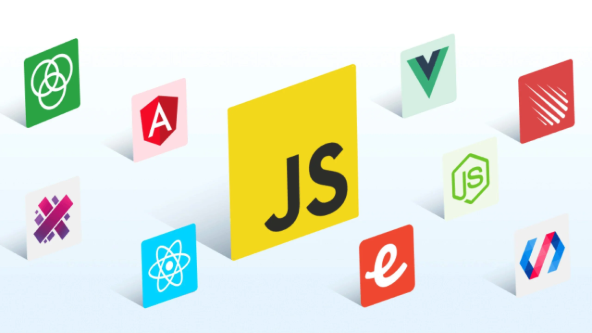JSWebSocket自动重连实现方法详解
时间:2025-06-28 11:29:37 319浏览 收藏
珍惜时间,勤奋学习!今天给大家带来《JS实现WebSocket自动重连机制详解》,正文内容主要涉及到等等,如果你正在学习文章,或者是对文章有疑问,欢迎大家关注我!后面我会持续更新相关内容的,希望都能帮到正在学习的大家!
WebSocket重连机制通过监听onclose事件、设置重连策略、恢复连接状态来实现自动重连。1. 监听连接关闭事件,触发重连逻辑;2. 实现重连函数并采用指数退避等策略控制重试间隔;3. 重连成功后恢复订阅或发送心跳等操作;4. 在Node.js中使用ws库实现时需注意事件绑定方式和错误处理;5. 测试可通过断开服务器、模拟网络故障等方式进行;6. 监控则通过日志、心跳包及专用工具实现对连接状态的实时跟踪。

WebSocket重连的核心在于检测连接断开,并在断开后尝试重新建立连接。关键点包括监听onclose事件、设置重连策略(例如指数退避)、以及在重连成功后处理状态。

解决方案
实现WebSocket自动重连机制,主要涉及以下几个步骤:

监听连接关闭事件: WebSocket对象的
onclose事件会在连接关闭时触发。这是启动重连机制的关键。
实现重连函数: 编写一个函数来尝试重新建立WebSocket连接。这个函数应该处理连接失败的情况,并根据重连策略进行重试。
设置重连策略: 简单的重连策略是固定延迟重试。更复杂的策略是指数退避,即每次重试的延迟时间都会增加,避免在服务器压力过大时造成更大的负担。
处理重连成功后的状态: 重连成功后,需要重新订阅消息、发送状态等,恢复之前的会话状态。
下面是一个简单的JavaScript代码示例:
class AutoReconnectWebSocket {
constructor(url, protocols = [], reconnectInterval = 1000) {
this.url = url;
this.protocols = protocols;
this.reconnectInterval = reconnectInterval;
this.ws = null;
this.connect();
}
connect() {
this.ws = new WebSocket(this.url, this.protocols);
this.ws.onopen = () => {
console.log("WebSocket connected");
this.onopen && this.onopen(); // 用户自定义的 onopen
};
this.ws.onmessage = (event) => {
this.onmessage && this.onmessage(event); // 用户自定义的 onmessage
};
this.ws.onclose = (event) => {
console.log("WebSocket disconnected, reconnecting in " + this.reconnectInterval + "ms");
this.onclose && this.onclose(event); // 用户自定义的 onclose
setTimeout(() => {
this.connect();
}, this.reconnectInterval);
};
this.ws.onerror = (error) => {
console.error("WebSocket error:", error);
this.onerror && this.onerror(error); // 用户自定义的 onerror
};
}
send(data) {
if (this.ws && this.ws.readyState === WebSocket.OPEN) {
this.ws.send(data);
} else {
console.warn("WebSocket is not open, message not sent.");
}
}
close() {
if (this.ws) {
this.ws.close();
}
}
}
// 使用示例
const socket = new AutoReconnectWebSocket("ws://example.com/socket", [], 3000);
socket.onopen = () => {
console.log("Socket opened successfully after reconnect or initial connect.");
socket.send("Hello from client!");
};
socket.onmessage = (event) => {
console.log("Received message:", event.data);
};
socket.onclose = (event) => {
console.log("Socket closed. Reason:", event.code, event.reason);
};
socket.onerror = (error) => {
console.error("Socket error occurred:", error);
};如何设置更复杂的重连策略,例如指数退避?
指数退避的核心在于,每次重连失败后,等待的时间都会翻倍,直到达到一个最大值。这样可以避免在高并发情况下,大量客户端同时重连导致服务器压力过大。
class ExponentialBackoffWebSocket {
constructor(url, protocols = [], initialInterval = 1000, maxInterval = 30000) {
this.url = url;
this.protocols = protocols;
this.initialInterval = initialInterval;
this.maxInterval = maxInterval;
this.currentInterval = initialInterval;
this.ws = null;
this.connect();
}
connect() {
this.ws = new WebSocket(this.url, this.protocols);
this.ws.onopen = () => {
console.log("WebSocket connected");
this.currentInterval = this.initialInterval; // 重置间隔
this.onopen && this.onopen();
};
this.ws.onmessage = (event) => {
this.onmessage && this.onmessage(event);
};
this.ws.onclose = (event) => {
console.log("WebSocket disconnected, reconnecting in " + this.currentInterval + "ms");
this.onclose && this.onclose(event);
setTimeout(() => {
this.connect();
this.currentInterval = Math.min(this.currentInterval * 2, this.maxInterval); // 指数退避
}, this.currentInterval);
};
this.ws.onerror = (error) => {
console.error("WebSocket error:", error);
this.onerror && this.onerror(error);
};
}
send(data) {
if (this.ws && this.ws.readyState === WebSocket.OPEN) {
this.ws.send(data);
} else {
console.warn("WebSocket is not open, message not sent.");
}
}
close() {
if (this.ws) {
this.ws.close();
}
}
}在这个例子中,initialInterval是初始的重连间隔,maxInterval是最大重连间隔。每次重连失败后,currentInterval都会翻倍,直到达到maxInterval。重连成功后,currentInterval会重置为initialInterval。
如何处理重连成功后的状态恢复?
重连成功后,可能需要重新订阅频道、发送心跳包、或者同步一些状态。这取决于具体的应用场景。
class StateRestoringWebSocket {
constructor(url, protocols = [], reconnectInterval = 1000, subscriptions = []) {
this.url = url;
this.protocols = protocols;
this.reconnectInterval = reconnectInterval;
this.subscriptions = subscriptions; // 存储订阅信息
this.ws = null;
this.connect();
}
connect() {
this.ws = new WebSocket(this.url, this.protocols);
this.ws.onopen = () => {
console.log("WebSocket connected");
this.restoreSubscriptions(); // 恢复订阅
this.onopen && this.onopen();
};
this.ws.onmessage = (event) => {
this.onmessage && this.onmessage(event);
};
this.ws.onclose = (event) => {
console.log("WebSocket disconnected, reconnecting in " + this.reconnectInterval + "ms");
this.onclose && this.onclose(event);
setTimeout(() => {
this.connect();
}, this.reconnectInterval);
};
this.ws.onerror = (error) => {
console.error("WebSocket error:", error);
this.onerror && this.onerror(error);
};
}
send(data) {
if (this.ws && this.ws.readyState === WebSocket.OPEN) {
this.ws.send(data);
} else {
console.warn("WebSocket is not open, message not sent.");
}
}
close() {
if (this.ws) {
this.ws.close();
}
}
subscribe(channel) {
this.subscriptions.push(channel);
if (this.ws && this.ws.readyState === WebSocket.OPEN) {
this.ws.send(JSON.stringify({ type: 'subscribe', channel: channel })); // 假设服务器使用JSON格式
}
}
restoreSubscriptions() {
this.subscriptions.forEach(channel => {
this.subscribe(channel);
});
}
}
// 使用示例
const socket = new StateRestoringWebSocket("ws://example.com/socket", [], 3000, ['channel1', 'channel2']);
socket.onopen = () => {
console.log("Socket opened successfully after reconnect or initial connect.");
// socket.send("Hello from client!"); // 不再需要在 onopen 中发送初始消息
};
socket.onmessage = (event) => {
console.log("Received message:", event.data);
};
socket.onclose = (event) => {
console.log("Socket closed. Reason:", event.code, event.reason);
};
socket.onerror = (error) => {
console.error("Socket error occurred:", error);
};
// 订阅新的频道
socket.subscribe('channel3');在这个例子中,subscriptions数组存储了需要订阅的频道。restoreSubscriptions函数会在连接建立后重新订阅这些频道。subscribe函数用于添加新的订阅,并在连接建立后立即发送订阅消息。
如何在Node.js环境中实现WebSocket自动重连?
在Node.js环境中,可以使用ws或socket.io等库来实现WebSocket。自动重连的逻辑与浏览器环境类似,但需要注意一些差异,例如错误处理和进程管理。
const WebSocket = require('ws');
class AutoReconnectWebSocketNode {
constructor(url, reconnectInterval = 1000) {
this.url = url;
this.reconnectInterval = reconnectInterval;
this.ws = null;
this.connect();
}
connect() {
this.ws = new WebSocket(this.url);
this.ws.on('open', () => {
console.log("WebSocket connected");
this.onopen && this.onopen();
});
this.ws.on('message', (message) => {
this.onmessage && this.onmessage(message);
});
this.ws.on('close', () => {
console.log("WebSocket disconnected, reconnecting in " + this.reconnectInterval + "ms");
this.onclose && this.onclose();
setTimeout(() => {
this.connect();
}, this.reconnectInterval);
});
this.ws.on('error', (error) => {
console.error("WebSocket error:", error);
this.onerror && this.onerror(error);
// 在 Node.js 中,错误可能不会触发 close 事件,需要手动关闭连接
this.ws.close();
});
}
send(data) {
if (this.ws && this.ws.readyState === WebSocket.OPEN) {
this.ws.send(data);
} else {
console.warn("WebSocket is not open, message not sent.");
}
}
close() {
if (this.ws) {
this.ws.close();
}
}
}
// 使用示例
const socket = new AutoReconnectWebSocketNode("ws://example.com/socket", 3000);
socket.onopen = () => {
console.log("Socket opened successfully after reconnect or initial connect.");
socket.send("Hello from server!");
};
socket.onmessage = (message) => {
console.log("Received message:", message);
};
socket.onclose = () => {
console.log("Socket closed.");
};
socket.onerror = (error) => {
console.error("Socket error occurred:", error);
};关键区别在于,Node.js中使用ws库,事件监听方式略有不同(例如,使用on('open', ...)而不是ws.onopen = ...)。 此外,在Node.js环境中,需要更谨慎地处理错误,因为错误可能不会总是触发close事件。
如何测试WebSocket重连机制?
测试WebSocket重连机制需要模拟连接断开的情况。这可以通过多种方式实现:
手动断开服务器: 最简单的方法是直接关闭WebSocket服务器,观察客户端是否能够自动重连。
模拟网络故障: 可以使用工具(例如
iptables)模拟网络故障,例如丢包或延迟,观察客户端的重连行为。服务器主动断开连接: 在服务器端实现一个接口,允许客户端主动请求断开连接,用于测试客户端的重连逻辑。
使用代理服务器: 可以使用代理服务器(例如
Charles或Fiddler)拦截WebSocket连接,并模拟断开连接的情况。
在测试过程中,需要关注以下几点:
- 重连是否成功。
- 重连间隔是否符合预期。
- 重连后,状态是否正确恢复。
- 在高并发情况下,重连是否会导致服务器压力过大。
如何监控WebSocket连接状态?
监控WebSocket连接状态对于及时发现和解决问题至关重要。可以使用以下方法来监控连接状态:
客户端日志: 在客户端记录连接状态的变化,例如连接建立、断开、重连等。
服务器端日志: 在服务器端记录客户端连接和断开的信息。
心跳检测: 客户端定期向服务器发送心跳包,服务器在一定时间内没有收到心跳包,则认为连接已断开。
监控工具: 可以使用专门的监控工具(例如
Prometheus或Grafana)来监控WebSocket连接的指标,例如连接数、消息延迟等。
监控的指标可以包括:
- 连接数。
- 消息发送和接收速率。
- 连接延迟。
- 连接断开次数。
- 重连次数。
通过监控这些指标,可以及时发现和解决WebSocket连接相关的问题。
以上就是《JSWebSocket自动重连实现方法详解》的详细内容,更多关于自动重连的资料请关注golang学习网公众号!
-
502 收藏
-
501 收藏
-
501 收藏
-
501 收藏
-
501 收藏
-
126 收藏
-
467 收藏
-
239 收藏
-
323 收藏
-
494 收藏
-
112 收藏
-
385 收藏
-
371 收藏
-
260 收藏
-
206 收藏
-
453 收藏
-
276 收藏
-

- 前端进阶之JavaScript设计模式
- 设计模式是开发人员在软件开发过程中面临一般问题时的解决方案,代表了最佳的实践。本课程的主打内容包括JS常见设计模式以及具体应用场景,打造一站式知识长龙服务,适合有JS基础的同学学习。
- 立即学习 543次学习
-

- GO语言核心编程课程
- 本课程采用真实案例,全面具体可落地,从理论到实践,一步一步将GO核心编程技术、编程思想、底层实现融会贯通,使学习者贴近时代脉搏,做IT互联网时代的弄潮儿。
- 立即学习 516次学习
-

- 简单聊聊mysql8与网络通信
- 如有问题加微信:Le-studyg;在课程中,我们将首先介绍MySQL8的新特性,包括性能优化、安全增强、新数据类型等,帮助学生快速熟悉MySQL8的最新功能。接着,我们将深入解析MySQL的网络通信机制,包括协议、连接管理、数据传输等,让
- 立即学习 500次学习
-

- JavaScript正则表达式基础与实战
- 在任何一门编程语言中,正则表达式,都是一项重要的知识,它提供了高效的字符串匹配与捕获机制,可以极大的简化程序设计。
- 立即学习 487次学习
-

- 从零制作响应式网站—Grid布局
- 本系列教程将展示从零制作一个假想的网络科技公司官网,分为导航,轮播,关于我们,成功案例,服务流程,团队介绍,数据部分,公司动态,底部信息等内容区块。网站整体采用CSSGrid布局,支持响应式,有流畅过渡和展现动画。
- 立即学习 485次学习
